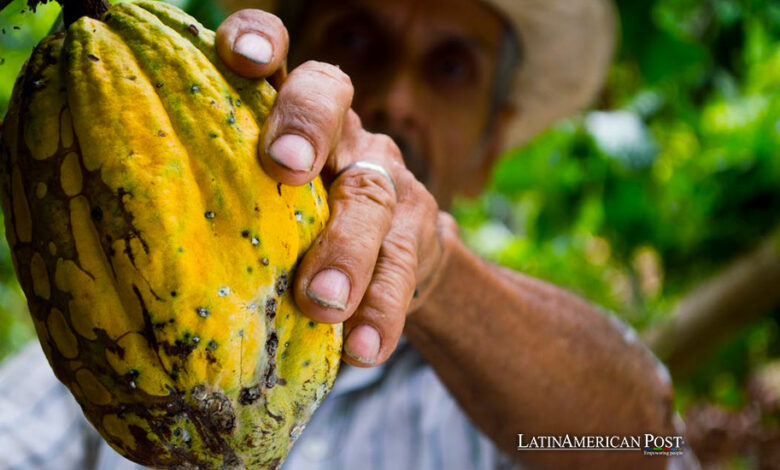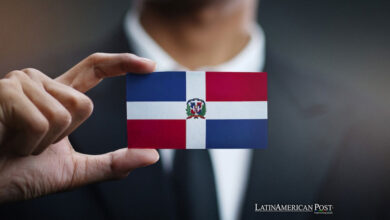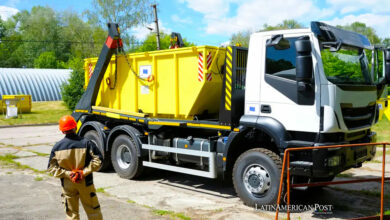Cacao’s Trade Journey Across Latin America Spans Over 5,000 Years

Exploring the ancient path of the cacao tree, from the Amazon basin to the diverse cultures of Latin America, this article delves into the origins, spread, and impact of one of the world’s most cherished crops, revealing a story of commerce, culture, and genetic diversity spanning over 5,000 years.
Decadent Origins of the Cacao Tree
The cacao tree, Theobroma cacao, is known for its precious beans, which give us chocolate, cocoa butter, and cocoa liquor. However, the tree tells a story much more decadent than the flavors it bestows. Recent research published in Scientific Reports uncovers this tree’s journey, suggesting its spread from the Amazon basin to various regions in South and Central America over 5,000 years ago through trade routes. This narrative not only reshapes our understanding of cacao domestication but also illuminates the interconnected histories of Latin American civilizations.
The origins of cacao’s domestication in the upper Amazon are well-established. Yet, the pathways through which its use by other cultures spread across South and Central America remained shrouded in mystery until now. Claire Lanaud of the Agap Institute, University of Montpellier, and her team embarked on a quest to trace these routes. By analyzing residues from 352 ceramic objects from 19 pre-Columbian cultures spanning roughly 5,900 to 400 years ago across Ecuador, Colombia, Peru, Mexico, Belize, and Panama, they pieced together a saga of ancient trade and cultural exchange.
The study found evidence of ancient cacao DNA and three components of methylxanthine (a mild stimulant) present in modern T. cacao strains – theobromine, theophylline, and caffeine. This, coupled with genetic information from 76 modern samples of T. cacao, aimed to uncover how ancient strains diversified and spread. The findings suggest a scenario of extensive cultivation along the Pacific coast shortly after its domestication in the Amazon, with high levels of diversity indicating that genetically distinct populations were bred together.
Cacao’s Diverse Cultivation and Spread
Cacao genotypes from the Peruvian Amazon in the coastal Ecuadorian region of Valdivia indicate prolonged contact between these cultures. Peruvian strains were also found in artifacts from the Colombian Caribbean coast, pointing to a widespread diffusion of cacao strains among countries. This spread and crossing of strains to adapt to new environments as different cultures adopted them underscore a complex history of cacao domestication that forms the basis of current cacao tree populations.
Understanding this complex history is more than an academic pursuit; it holds practical implications for managing cacao’s genetic resources today. As the modern world grapples with threats like diseases and climate change, cacao’s genetic diversity and history can guide strategies to safeguard this vital crop. Examining ancient artifacts reveals the rich genetic tapestry of cacao, offering insights into how ancient peoples cultivated and valued this “food of the gods.”
The journey of cacao from the Amazon to the heart of Latin American civilizations underscores a shared heritage of agricultural innovation and trade. Countries like Ecuador, Colombia, and Peru, linked through the cacao trade, highlight the importance of cacao in cultural exchanges and economic networks long before the arrival of Europeans.
Moreover, this study reveals how ancient Latin American cultures were advanced in their agricultural practices, selectively breeding and cultivating cacao to suit their needs and tastes. The spread of cacao through trade routes signifies the importance of this crop in ancient economies and social rituals, playing a central role in ceremonies and as a luxury good.
The tale of cacao’s spread across Latin America also speaks to the resilience and adaptability of this crop. As it moved from its native Amazonian forests to new environments, it encountered and overcame challenges such as different climates and pests. The successful adaptation of cacao in diverse geographical areas is a testament to the ingenuity of ancient farmers who managed to cultivate a crop integral to their societies and economies.
Interconnectedness of Human Societies through Agriculture
This narrative of cacao, spanning thousands of years and crossing the landscapes of Latin America, reflects the interconnectedness of human societies through the lens of agriculture. It shows how a single crop can link disparate cultures and regions, contributing to a shared history that transcends modern national boundaries.
As we enjoy the delights that cacao-based products offer, understanding its rich history and the efforts of ancient civilizations to cultivate and spread this precious crop enriches our appreciation. The story of cacao is not just one of a plant’s journey through Latin America but a reflection of human ingenuity, cultural exchange, and the profound impact of agriculture on the development of societies.
Also read: Ecuador’s Cocoa Farmers Advocate for Fair Trade Amid Global Price Surge on Valentine’s Day
The ancient paths of cacao across Latin America tell a story of commerce, culture, and cultivation that is integral to the history of this region. By uncovering these routes and understanding the genetic diversity of cacao, researchers not only shed light on the past but also help secure the future of this indispensable crop against modern challenges. This journey of discovery reaffirms the significance of cacao in the rich tapestry of Latin American heritage, embodying the resilience, diversity, and interconnectedness that define this vibrant region.





